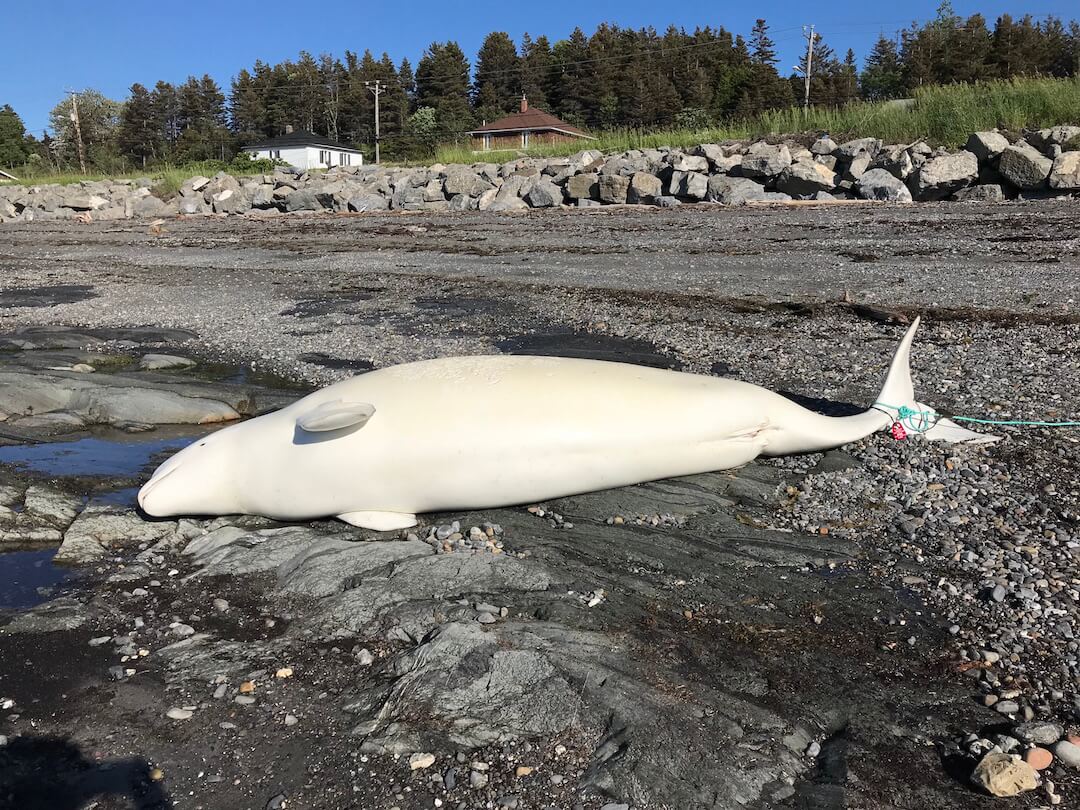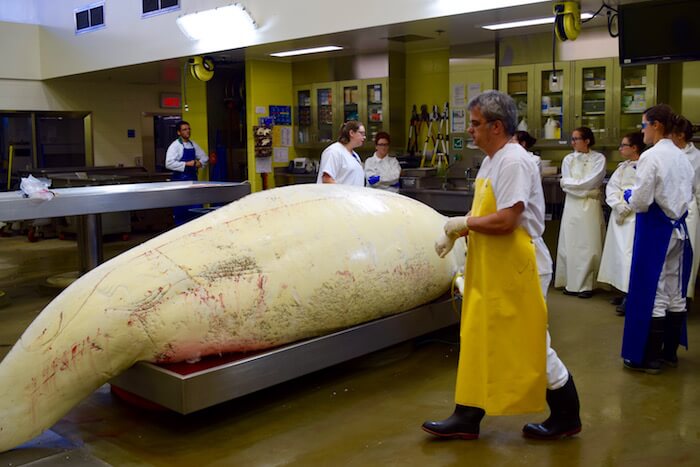The tragic plight of the St. Lawrence beluga population continues. Once again this year, researchers are highly concerned about the prevalence of perinatal mortalities in pregnant females and newborns. Since the start of 2018, 12 St. Lawrence beluga carcasses have been found. This number does not represent the actual number of deaths, but the number of carcasses discovered. In 2017, 22 carcasses had been found and in 2016, this figure was 14.
“There is no clear trend in the number of carcasses from year to year,” says veterinarian Stéphane Lair, professor at Université de Montréal’s Faculty of Veterinary Medicine. “On the other hand, it is the sex and age of the carcasses where we have been observing a disturbing trend. Since 2010, there has been an uptick in the percentage of females and the number of newborns among the discovered carcasses,” he adds. In 2018, there were five females and one male among the seven adult belugas found, while the sex of the seventh carcass could not be determined.
Five newborn carcasses were counted, which is five times higher than the average number prior to 2010. For an endangered population, the loss of newborns represents a significant threat.
Among the stranded beluga carcasses, four adult females were sent to Université de Montréal’s Faculty of Veterinary Medicine in Saint-Hyacinthe for a complete necropsy. Preliminary analysis results suggest that two of the females died from calving complications: the first had just given birth but never nursed, while the second suffered a severe uterine tear at the time of calving. The calves are also likely to have died as a result of their respective mothers’ deaths.
The carcass of Athéna, a female known since 1989, is of great interest to researchers. Although preliminary examination was not able to identify the cause of her death, the observation of milk secretions in the mammary glands is intriguing. Athéna may have reached the age of menopauseand had not been repeatedly observed with a calf for several summers. Researchers question the role of older females in caring for young within their community.
Robert Michaud, scientific director of the Group for Research and Education on Marine Mammals and coordinator of the Quebec Marine Mammal Emergency Response Network, reminds us of the importance of long-term research. “The monitoring of St. Lawrence beluga mortality coupled with the monitoring of live animals through photo-ID census techniques is one of the longest-running surveys being conducted on marine mammals. With these data spanning over 30 years, we can detect trends and anomalies and hope to better understand belugas.”






